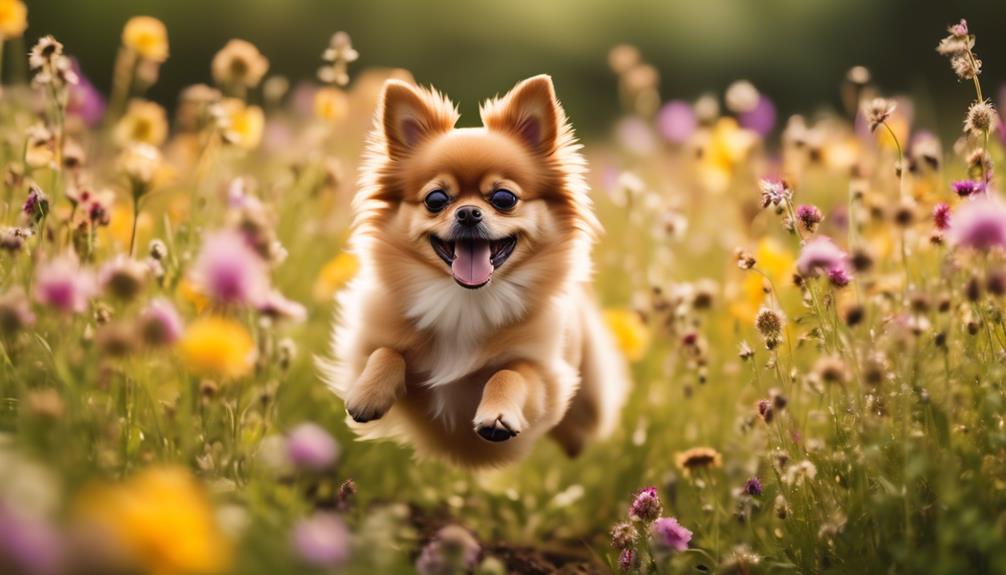
Have you ever seen a Pomchi mixed dog breed? These charming canines are like a delightful blend of two worlds, combining the playfulness of a Pomeranian with the spunk of a Chihuahua.
As you explore the pictures, characteristics, and fascinating facts about Pomchis, you will be captivated by their adorable appearance and unique traits. From their size and coat variations to their adaptability to apartment living, there is so much to discover.
But that’s just the beginning. Stay tuned to uncover the secrets behind their all-around friendliness and how they interact with families. Get ready to embark on a journey of exploring the highlights, history, health, and compatibility of these delightful mixed breed dogs.
Key Takeaways
- Pomchis are a mixed-breed dog, not a purebred, and are typically a mix of Chihuahua and Pomeranian.
- They come in various colors, including sable, brown, blue and tan, black and tan, or cream, and usually have longer coats that require regular grooming.
- Pomchis tend to form a strong bond with a favorite person in the household and can be yappy, requiring early training to control barking.
- They are generally small dogs, weighing between four to twelve pounds, and have lots of energy and spunk, enjoying being the center of attention.
Pomchi Mixed Breed Appearance
When it comes to the appearance of the Pomchi mixed breed, you can expect a delightful combination of features from both the Chihuahua and Pomeranian parents. The Pomchi usually has a small size, weighing between four to twelve pounds and standing six to ten inches tall at the shoulder.
They’ve longer coats that come in various colors like sable, brown, blue and tan, black and tan, or cream. With their double coat, Pomchis are fluffy and adorable, but they require regular grooming to maintain their appearance.
Their small size and adorable facial expressions make them quite charming. Overall, the Pomchi’s appearance is a perfect blend of the Chihuahua and Pomeranian, resulting in a cute and lovable companion.
Size and Coat Variations
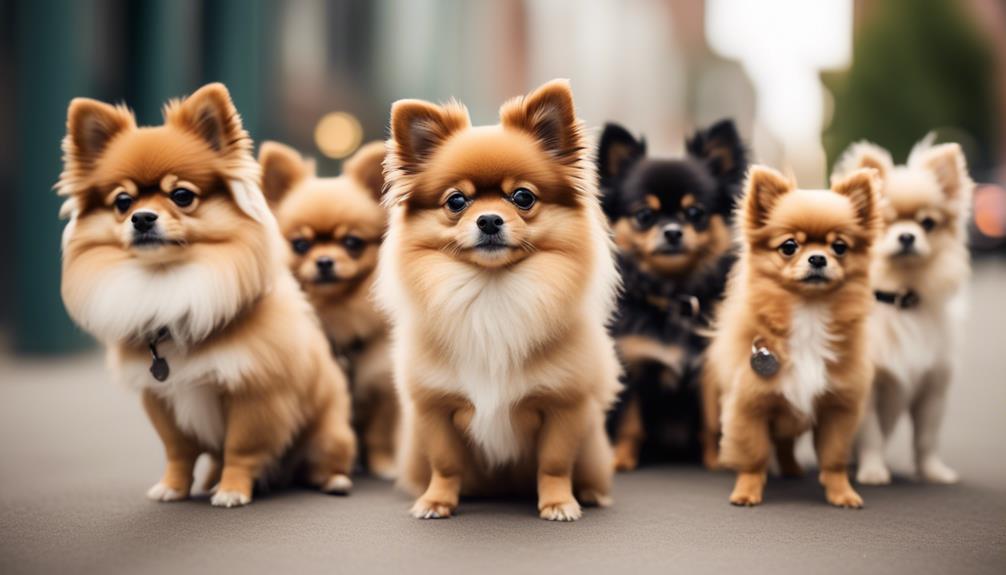
The size of Pomchis can vary, with most individuals weighing between four to twelve pounds and standing six to ten inches tall at the shoulder. They’re generally small dogs, a mix of Chihuahua and Pomeranian parents. Males are usually slightly larger than females, but size can vary among individuals.
Despite their small size, Pomchis have lots of energy and spunk, and they enjoy being the center of attention. Socialization and early training are important to prevent fearfulness and aggression. While they can be trained, Pomchis may require patience. It’s necessary to train them to control their tendency to bark excessively.
Pomchis can form a strong bond with a favorite person but can also get along with other family members.
Pomchi Puppy and Adult Photos
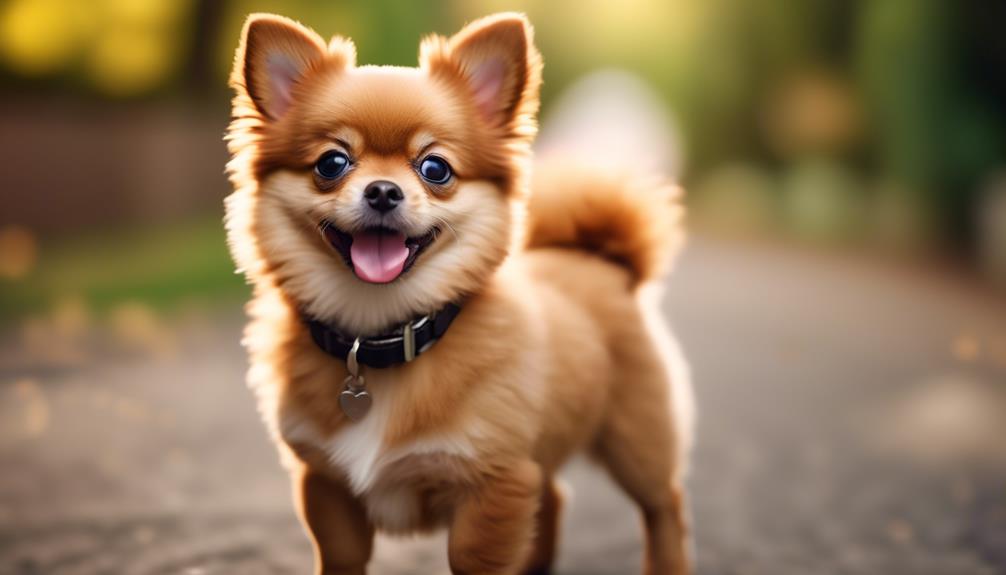
You can find adorable photos of both Pomchi puppies and adult dogs. These pictures showcase the cuteness and charm of these mixed breed dogs. Here are some things you can expect to see in these photos:
- Pomchi puppies with their tiny, fluffy bodies and playful expressions.
- Adult Pomchis with their compact size and expressive eyes.
- Photos highlighting the variety of coat colors, including sable, brown, blue and tan, black and tan, and cream.
- Images capturing the different facial expressions and body language of Pomchis, showing their personality and spunk.
- Pictures that illustrate the size of Pomchis, ranging from six to ten inches in height and weighing between four to twelve pounds.
These photos are sure to make you fall in love with these adorable and lively Pomchi dogs.
Facial Expressions and Body Language
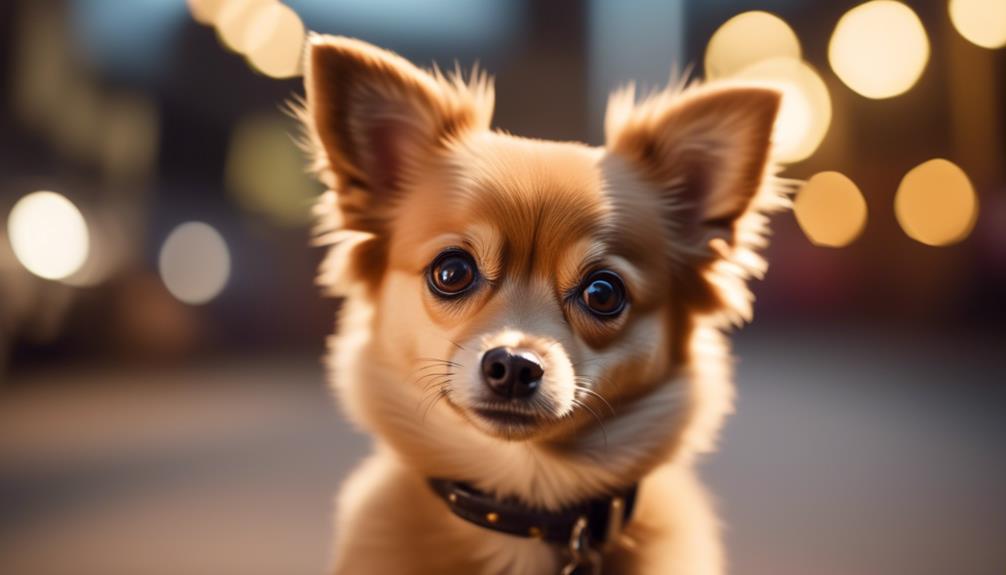
Pomchis communicate their emotions and intentions through a combination of facial expressions and body language. Their expressive faces and gestures can convey a range of emotions, from happiness and excitement to fear and anxiety. By paying attention to their subtle cues, you can better understand what your Pomchi is feeling and respond accordingly. To help you interpret their body language, here is a table showcasing some common Pomchi behaviors and their corresponding meanings:
| Facial Expression | Body Language |
|---|---|
| Ears perked up | Alertness |
| Tail wagging rapidly | Excitement |
| Cowering and trembling | Fear or anxiety |
| Licking lips | Nervousness |
Adaptability to Apartment Living
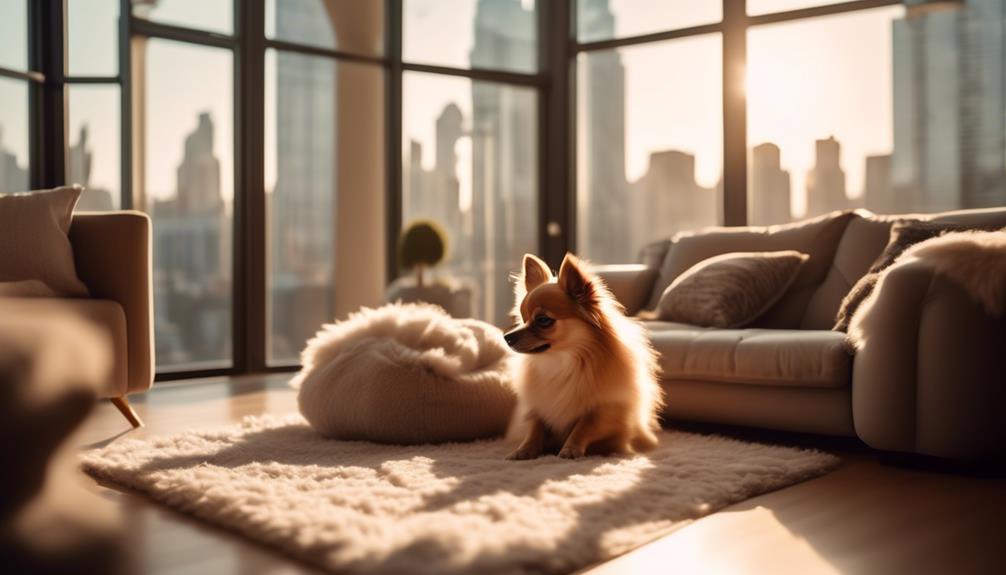
After understanding your Pomchi’s facial expressions and body language, it’s important to consider their adaptability to apartment living. Here are some factors to keep in mind:
- Size isn’t the only factor to consider for apartment dogs
- Small dog breeds with high energy can still thrive in apartments
- Consider the behavior and noise level of the dog when living in shared spaces
- Desirable qualities in an apartment dog include being quiet, low-energy, and polite towards other residents
- Prioritize qualities such as being quiet, low-energy, calm indoors, and well-mannered
When choosing a dog for apartment living, it’s crucial to consider their adaptability to a confined space. While size is a consideration, it’s not the only factor.
Small dogs with high energy levels can still do well in apartments if they receive enough exercise and mental stimulation. Additionally, you should consider the dog’s behavior and noise level, as living in shared spaces requires being considerate of neighbors.
Look for dogs that are quiet, low-energy, and polite towards others. Prioritizing these qualities will help create a harmonious living environment for both you and your Pomchi.
Factors to Consider for Apartment Dogs
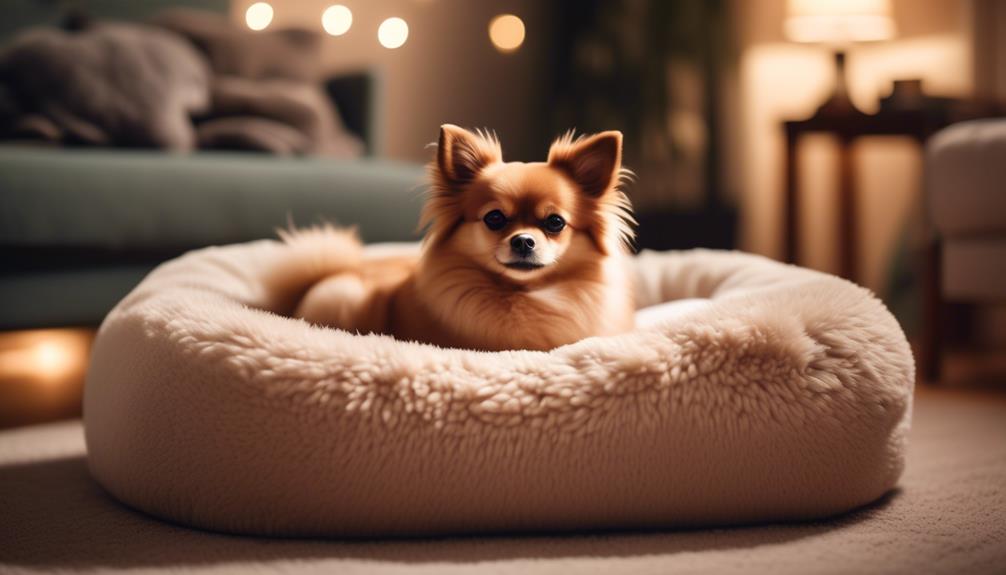
When selecting a dog for apartment living, it’s important to consider various factors.
Size alone shouldn’t be the sole determinant for apartment dogs. It’s crucial to consider the energy levels and space requirements of different breeds.
Prioritize qualities such as being quiet, low-energy, calm indoors, and well-mannered. Take into account your neighbors’ comfort when selecting a dog.
Creating a harmonious living environment is essential, so choose a dog that adapts well to apartment living. Some dogs aren’t well suited to apartment living, especially those that are highly sensitive, independent thinking, or assertive.
Consider your dog-owning experience when choosing a new pooch. Dogs that are resilient and can bounce back from mistakes or inconsistencies are good for novice owners.
Choosing the Right Apartment Dog
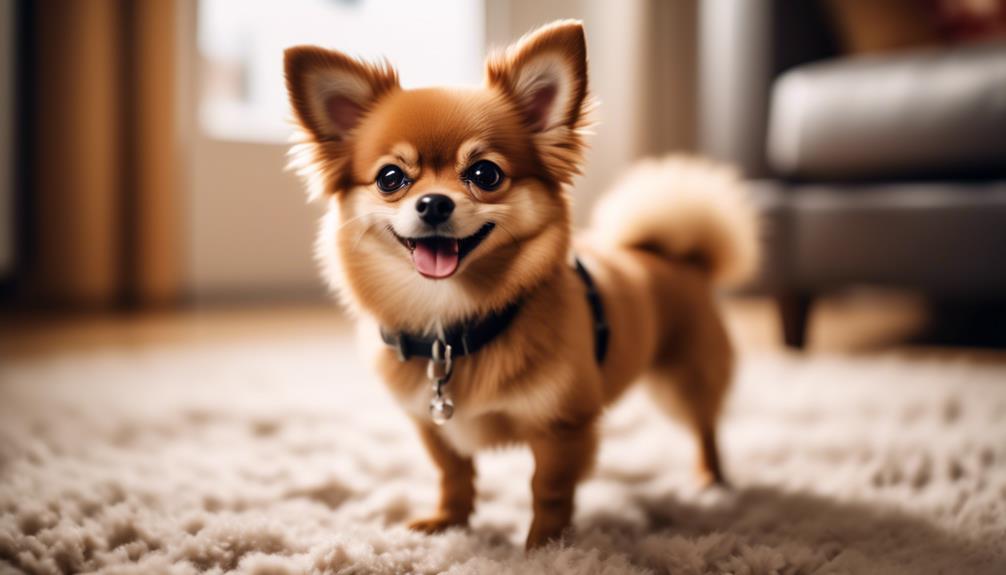
Consider your living situation and lifestyle when choosing the right apartment dog. It’s important to find a dog that fits well in your apartment and complements your daily routine. Here are some factors to consider:
- Size: While size isn’t the only factor, smaller dogs generally adapt better to apartment living.
- Energy level: Look for a dog with lower energy levels that can thrive in a smaller space.
- Behavior and noise level: Consider a dog that’s quiet and well-behaved, as this is essential when living in shared spaces.
- Compatibility with neighbors: Choose a dog that’s polite and considerate towards other residents to create a harmonious living environment.
- Adaptability: Look for a dog breed that naturally adapts well to apartment living.
Dogs Not Suited for Apartment Living
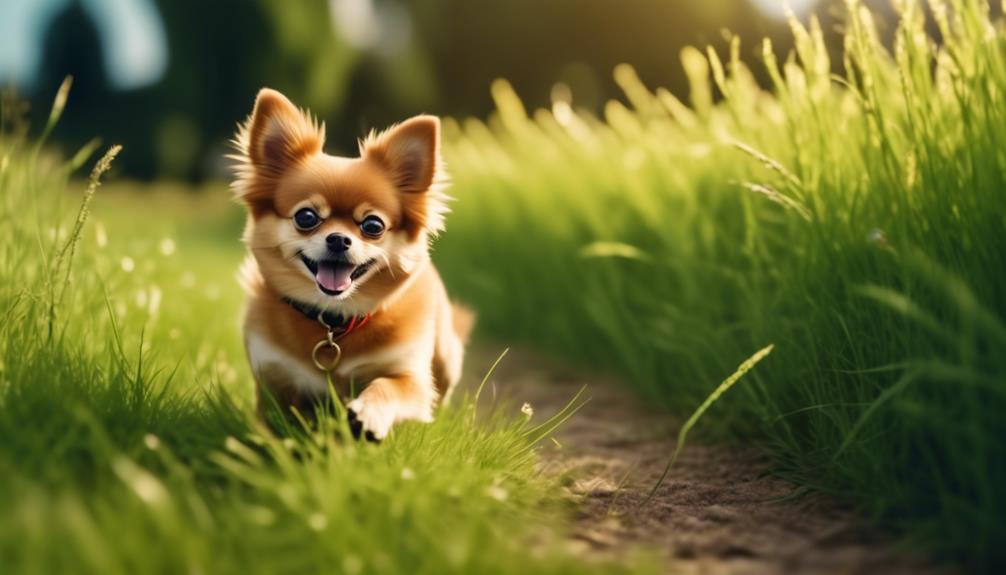
Some dog breeds aren’t suitable for apartment living due to their size, energy levels, and behavior. Larger breeds, such as Great Danes or Saint Bernards, may struggle with limited space and require more room to roam.
High-energy breeds, like Border Collies or Australian Shepherds, may become bored and restless in an apartment without enough opportunities for exercise. Additionally, breeds with a tendency to be loud or vocal, such as Beagles or Huskies, may disturb neighbors in close quarters.
Dogs that aren’t well-suited for apartment living may exhibit behaviors such as excessive barking, destructive chewing, or anxiety. It’s important to consider these factors and choose a dog that fits well with your living situation to ensure a happy and harmonious environment for both you and your four-legged companion.
All-around Friendliness of Dogs
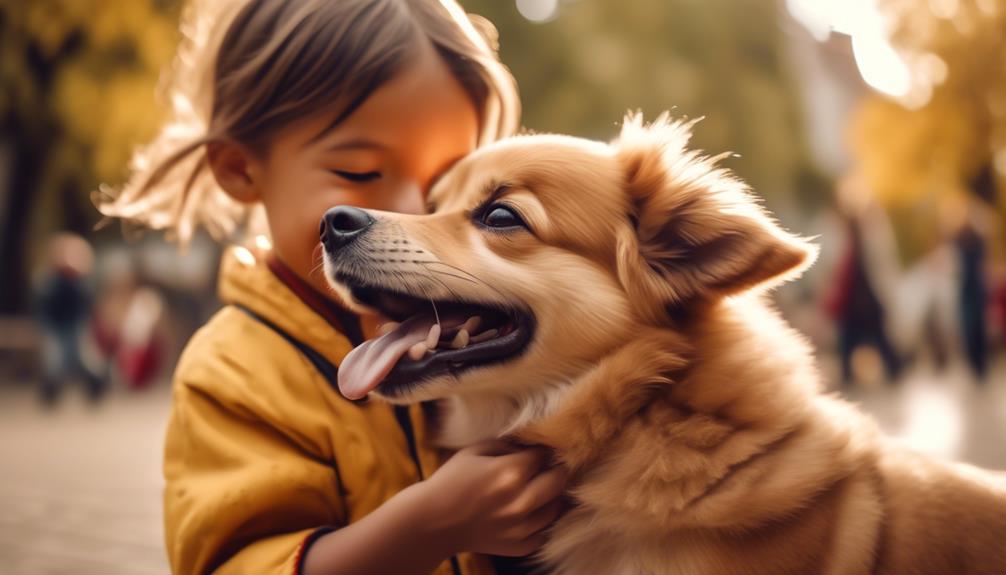
If you’re looking for a dog that’s known for its all-around friendliness, you’ll be delighted to learn about the various breeds that excel in this area. These breeds aren’t only affectionate with their families but also tend to be friendly towards strangers and other animals.
Here are five breeds that are known for their all-around friendliness:
- Labrador Retriever: Labradors are friendly, outgoing, and great with kids, making them perfect family dogs.
- Golden Retriever: Golden Retrievers are known for their friendly and gentle nature, making them excellent companions for both individuals and families.
- Beagle: Beagles are friendly, sociable, and get along well with other dogs, making them great additions to any household.
- Cavalier King Charles Spaniel: Cavaliers are known for their affectionate and friendly nature, making them perfect lap dogs and great with children.
- Boxer: Boxers are friendly, energetic, and love being around people, making them great family pets and playmates for kids.
These breeds aren’t only friendly but also bring joy and love to every aspect of your life.
How to Determine if a Dog Is Good With Families
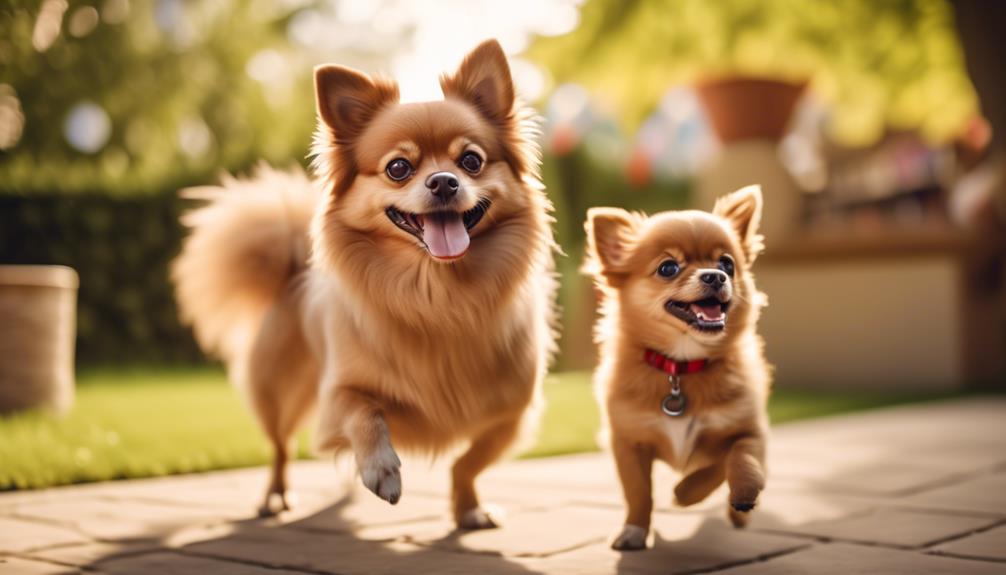
To determine if a dog is good with families, observe their behavior and interactions with people of all ages. Pay attention to how they respond to children, adults, and elderly individuals. Look for signs of friendliness, such as wagging tails, gentle approaches, and a willingness to be near people.
A family-friendly dog will be comfortable and calm in the presence of different family members. They should show patience and tolerance, especially towards children who may not always know how to properly interact with dogs. Watch for any signs of aggression or fearfulness, as these can indicate that a dog may not be suitable for a family environment.
It’s important to spend time with the dog and see how they interact with your own family members before making a decision.
Highlights of the Pomchi Breed
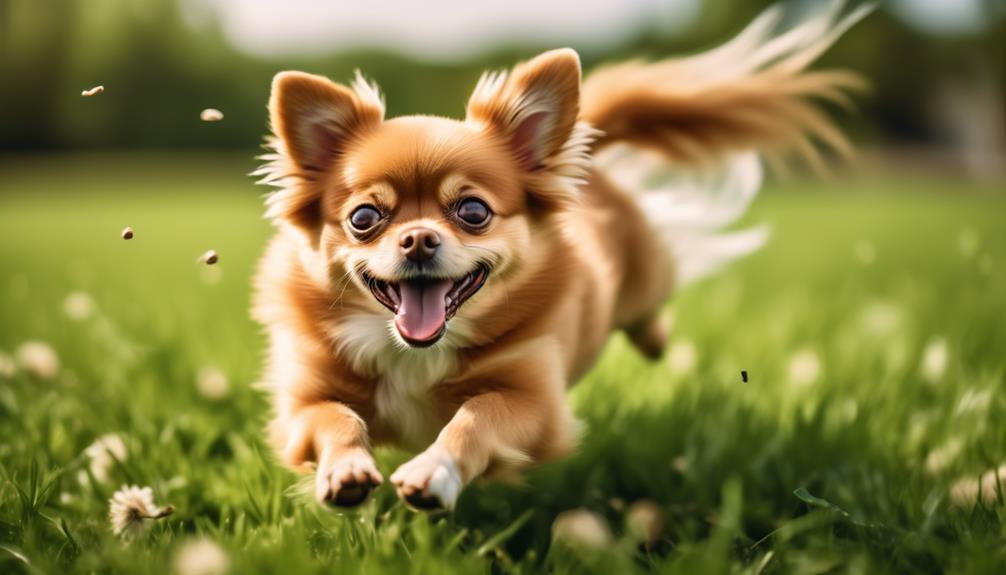
When determining if a dog is good with families, it’s important to observe their behavior and interactions with people of all ages, including children. Here are some highlights of the Pomchi breed that may help you decide if they’re a good fit for your family:
- Pomchis form a strong bond with a favorite person in the household.
- They can be yappy and may require early training to control excessive barking.
- Pomchis are generally small dogs, weighing between four to twelve pounds.
- They’ve lots of energy and enjoy being the center of attention.
- Socialization and early training are important to prevent fearfulness and aggression.
These highlights give you a glimpse into the Pomchi breed’s personality and characteristics.
Remember to consider your family’s lifestyle and the needs of the dog before making a decision.
Pomchi Health, Care, and Grooming Tips
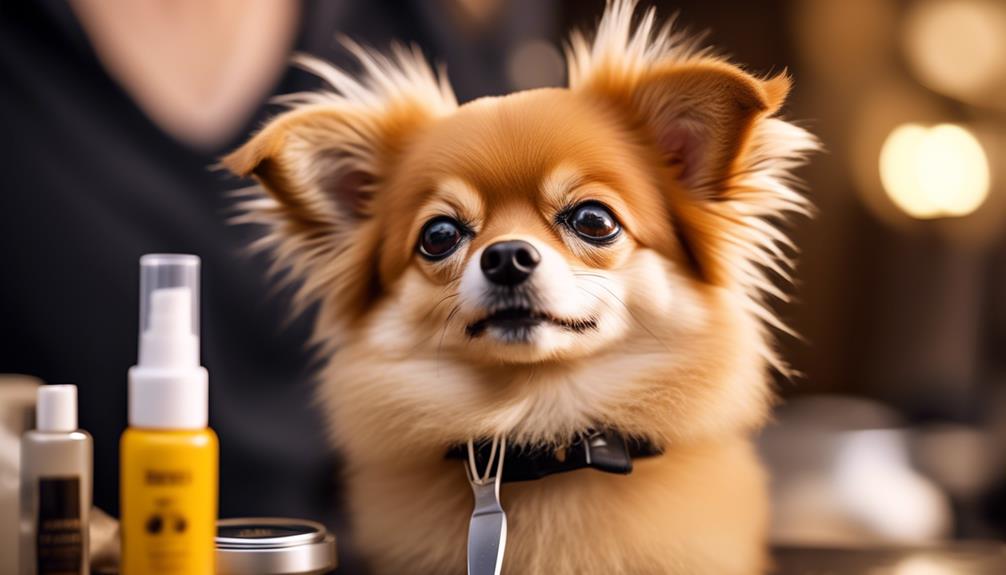
Taking care of the health and grooming needs of your Pomchi is essential for their overall well-being. Pomchis are generally healthy dogs, but they may be prone to certain health issues such as cataracts, progressive retinal atrophy, hypothyroidism, dental and gum disease, and epilepsy. Regular veterinary checkups and good care are important to ensure their well-being, and early detection of health concerns is crucial. Maintaining oral health by brushing their teeth daily is important to prevent dental issues. Pomchis are also prone to weight gain, so it is recommended to have a regular feeding schedule and limit treats. In terms of grooming, Pomchis have longer coats that require regular brushing at least once a week. They also require daily ear cleaning and debris check. However, due to their small size, Pomchis can be easily injured by excitable children and may prefer to be around adults.
| Health Care and Grooming Tips for Pomchis | ||
|---|---|---|
| Regular veterinary checkups | Brush their teeth daily | Limit treats |
| Regular feeding schedule | Regular brushing at least once a week | Daily ear cleaning |
| Watch for weight gain | Be cautious around excitable children | Prefer being around adults |
Frequently Asked Questions
Are Pomchis Good With Children?
Pomchis can be good with children, but their small size makes them prone to injury. They generally prefer being around adults. It’s important to supervise interactions and teach children to handle them gently.
What Is the Average Lifespan of a Pomchi?
The average lifespan of a Pomchi is around 12 to 16 years. They can live a long and happy life with proper care, regular vet check-ups, a balanced diet, exercise, and a loving environment.
Do Pomchis Shed a Lot?
Yes, Pomchis shed, but not excessively. Regular grooming, such as brushing their coat, can help minimize shedding. Consider their double coat and maintenance requirements when deciding if a Pomchi is right for you.
Can Pomchis Be Left Alone for Long Periods of Time?
Yes, Pomchis can be left alone for long periods of time, but it’s important to gradually introduce them to alone time and provide mental stimulation and toys to prevent boredom.
Are Pomchis Prone to Any Specific Health Issues?
Yes, Pomchis are prone to certain health issues. Some common problems include cataracts, progressive retinal atrophy, hypothyroidism, dental and gum disease, and epilepsy. Regular veterinary checkups and good care are important for their well-being.
Conclusion
With their various coat colors and sizes, Pomchis are sure to make a delightful addition to any home. Take a closer look at these spunky and lovable dogs, and you’ll see why they’re so beloved by their owners.
In conclusion, Pomchis are an adorable and unique mixed dog breed that will capture your heart with their charming looks and friendly nature. Whether you live in an apartment or have a family, these dogs are adaptable and affectionate companions.




